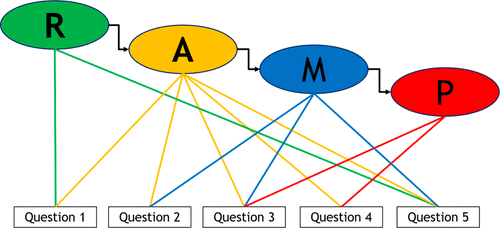当前位置:
X-MOL 学术
›
J. Chem. Educ.
›
论文详情
Our official English website, www.x-mol.net, welcomes your
feedback! (Note: you will need to create a separate account there.)
Developing Risk Assessment Competencies in Preservice K–12 Teachers
Journal of Chemical Education ( IF 2.5 ) Pub Date : 2020-06-10 , DOI: 10.1021/acs.jchemed.0c00108 Samuella B. Sigmann 1
Journal of Chemical Education ( IF 2.5 ) Pub Date : 2020-06-10 , DOI: 10.1021/acs.jchemed.0c00108 Samuella B. Sigmann 1
Affiliation

|
In 2015, “NFPA 45, Standard on Fire Protection for Laboratories Using Chemicals,” from the National Fire Protection Association (NFPA) was updated to include language requiring educators to perform a documented risk assessment when conducting demonstrations in K–12 classrooms. Additionally, in the past five years numerous organizations have created new materials to educate teachers about risk-based chemical safety. Despite efforts to disseminate chemical safety information and improve standards, incidents with student injuries continue to occur in educational K–12 laboratories. Because there is now an established expectation for teachers to perform hazard analysis and risk assessment prior to classroom implementation of demonstrations or experiments, chemical safety education to promote meaningful subject learning is needed for preservice science teachers. This paper describes implementation mechanisms and developed content on chemical safety and risk assessment that can be added to a methods course for undergraduate secondary education majors. These ideas are based on combining two established safety systems: RAMP and Five Key Questions to ask and answer.
中文翻译:

在职前K-12教师中发展风险评估能力
2015年,“ NFPA 45,使用化学药品的实验室防火标准”(美国国家消防协会(NFPA))进行了更新,以包括要求教育工作者在K-12教室进行示范时进行书面风险评估的语言。此外,在过去的五年中,许多组织创建了新的材料来教育教师基于风险的化学安全性。尽管努力传播化学安全信息并提高标准,但在教育性的K-12实验室中仍继续发生学生受伤事件。由于现在已经有了对教师在课堂上进行演示或实验之前进行危害分析和风险评估的期望,因此,职前科学教师需要进行化学安全教育以促进有意义的学科学习。本文介绍了化学安全性和风险评估的实施机制和开发的内容,这些内容可以添加到本科中等教育专业的方法课程中。这些想法基于两个已建立的安全系统的组合:RAMP和要提问和回答的五个关键问题。
更新日期:2020-06-10
中文翻译:

在职前K-12教师中发展风险评估能力
2015年,“ NFPA 45,使用化学药品的实验室防火标准”(美国国家消防协会(NFPA))进行了更新,以包括要求教育工作者在K-12教室进行示范时进行书面风险评估的语言。此外,在过去的五年中,许多组织创建了新的材料来教育教师基于风险的化学安全性。尽管努力传播化学安全信息并提高标准,但在教育性的K-12实验室中仍继续发生学生受伤事件。由于现在已经有了对教师在课堂上进行演示或实验之前进行危害分析和风险评估的期望,因此,职前科学教师需要进行化学安全教育以促进有意义的学科学习。本文介绍了化学安全性和风险评估的实施机制和开发的内容,这些内容可以添加到本科中等教育专业的方法课程中。这些想法基于两个已建立的安全系统的组合:RAMP和要提问和回答的五个关键问题。







































 京公网安备 11010802027423号
京公网安备 11010802027423号